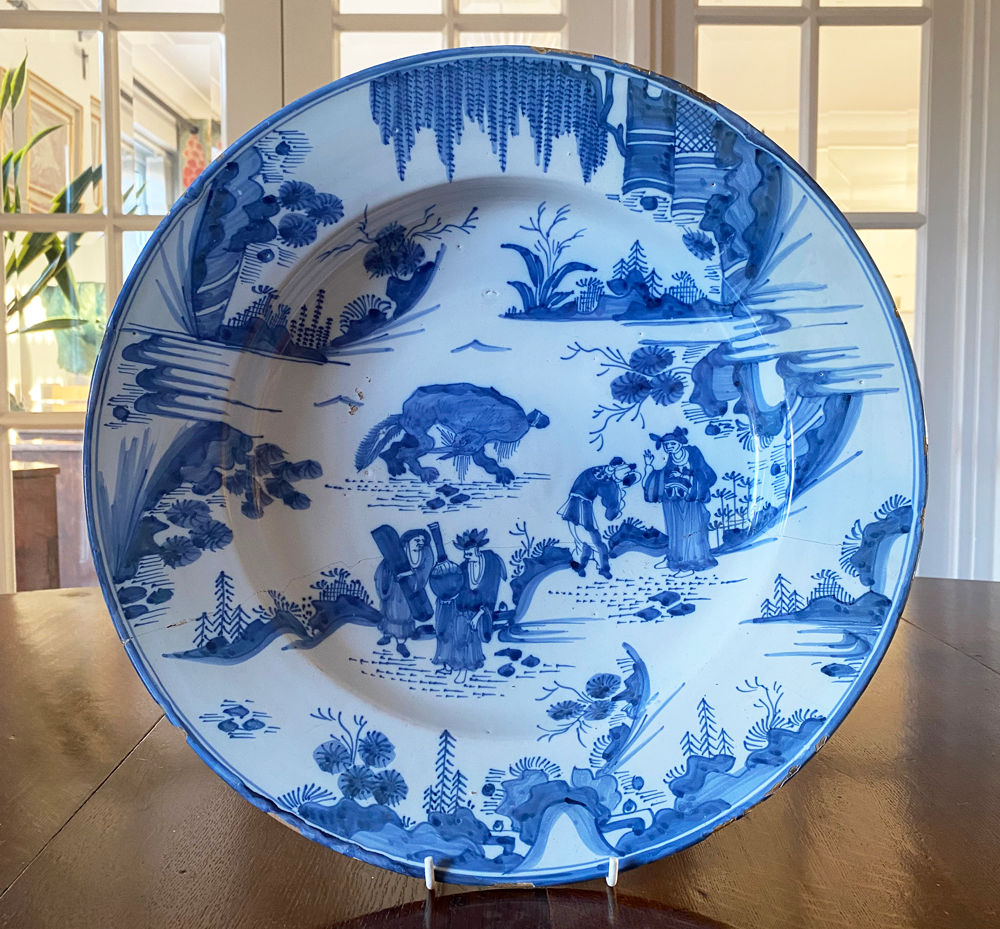
Tin glazed earthenware describes the method of decorating fine quality pottery using a technique first developed in Baghdad in the 9th century. In an attempt to rival the glossy whiteness of Chinese porcelain the earthenware was covered with an opaque white glaze.
The technique entered Europe through Spain which was under the rule of the Umayyad Muslim caliphate. Tin glazed earthenware arrived in Italy from Spain in the first half of the 13th century. From Italy the method spread throughout Europe.
The technique remained relatively unchanged into the 18th century. After the pottery has been fired it emerges from the kiln as a brownish earthenware. It is then dipped in a glaze made up of oxides of lead and tin combined with silicate of potash. This porous white coat can then be decorated with various metallic oxides, capable of withstanding the high-temperatures of the kiln needed to unite them with the tin glaze and fuse it to the surface of the clay. Blue comes from cobalt, green from copper, purple from manganese, yellow from antimony and orange from iron.
The colours are absorbed into the glaze as soon as they are applied. No corrections to the painted design is possible. Many art historians liken the process to that of fresco wall painting, rare Saxon examples of which are to be found in a number of Sussex churches. Once decorated the vessel is then given a second firing. This fixes the glaze to the object’s body and melts it to a glossy surface. Lead glaze is commonly applied before firing to enhance the finish.
Tin glazed earthenware is often known as delft. The name derives from the Dutch town of Delft which by the mid-17th century had become the most important centre for the manufacture of tin glazed earthenware.

Many of my favourite examples of tin glazed delft are those from the 18th century made in the British Isles. Like the Dutch tulip filled vase they are frequently stylistically influenced by the Chinese imported porcelain of the same date.
The decoration of Chinese Transitional Period porcelain typically employs naturalistic themes depicting, beasts, flowers and most especially figure subjects. Figure subjects on Transitional wares are often united by a narrative following the traditions of Chinese opera as well as literary art forms.
The early 18th century Queen Anne English delft charger beautifully imitates these Chinese decorative motifs.
The finest examples of delft tin glazed earthenware realise tens of thousands of pounds but examples like these can still be bought at auction for low to mid-hundreds of pounds. They have a delightful provincial quality. Whilst their decoration often reflects the regions in which they were made they connect the collector with the international stylistic influences of their time. There is a joy to tin glazed delft ware. Perhaps it is time you discovered the delights of collecting tin glazed earthenware!